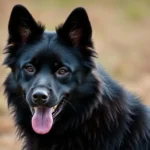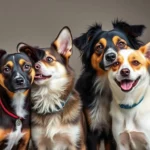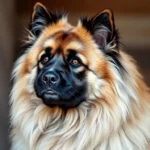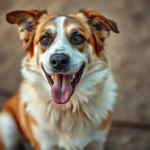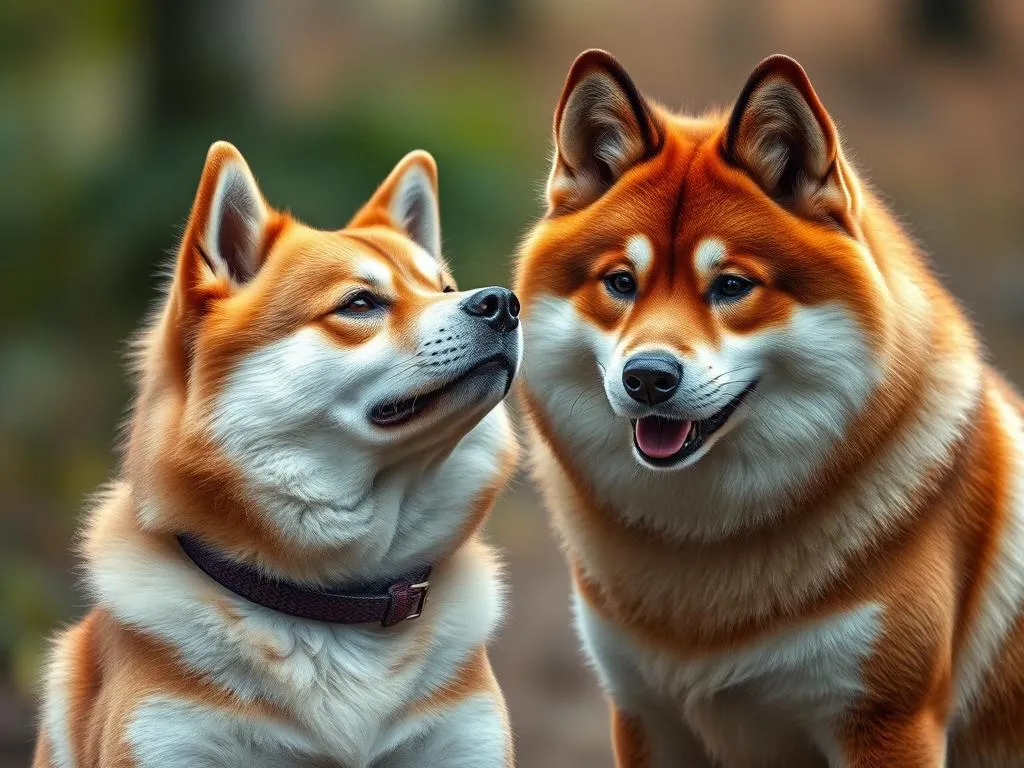
Understanding dog breeds is essential for potential pet owners, as each breed comes with its own unique characteristics, needs, and challenges. Among the many popular dog breeds, the Shiba Inu and the Korean Jindo stand out due to their rich histories, distinctive appearances, and unique temperaments. This article aims to compare and contrast these two breeds across various aspects, providing you with the information needed to make an informed decision about which breed might be the right fit for your lifestyle.
Breed Origins
Shiba Inu
The Shiba Inu originated in Japan, where it has been a beloved breed for centuries. This breed was initially developed for hunting small game in the mountainous regions of Japan. The Shiba Inu’s historical significance is intertwined with Japanese culture, symbolizing loyalty and resilience. Early breeding practices focused on maintaining the breed’s natural hunting instincts while enhancing its compact size and agility. Over time, the Shiba Inu became a companion dog, prized for its spirited personality and alertness.
Korean Jindo
In contrast, the Korean Jindo hails from Korea, specifically the Jindo Island. This breed is deeply rooted in Korean culture and folklore, often regarded as a national treasure. The Jindo was primarily bred for hunting purposes, excelling in tracking and retrieving game. Its loyalty and intelligence made it a favored choice among farmers and hunters. Traditional breeding practices emphasized the dog’s ability to work alongside humans, fostering a strong bond between the Jindo and its owner.
Physical Characteristics
Appearance of Shiba Inu
The Shiba Inu is a small to medium-sized dog, typically weighing between 17 to 23 pounds and standing about 13.5 to 16.5 inches tall at the shoulder. Its coat is dense and double-layered, coming in various colors, including red, sesame, black and tan, and cream. Distinctive features of the Shiba Inu include its curled tail and erect ears, which contribute to its fox-like appearance. These physical traits, combined with their alert demeanor, create an image of a confident and agile dog.
Appearance of Korean Jindo
The Korean Jindo, on the other hand, is a medium-sized dog with a sturdier build. It typically weighs between 35 to 50 pounds and stands around 18 to 24 inches tall. The Jindo possesses a double coat that can come in several colors, including white, yellow, brindle, and black. Its sharp eyes and bushy tail are notable features that add to its striking appearance. The Jindo’s muscular build reflects its working dog heritage, emphasizing strength and agility.
Temperament and Behavior
Shiba Inu Temperament
The Shiba Inu is known for its independent and spirited nature. While they are affectionate with their families, they can also be quite aloof with strangers. This breed exhibits a strong sense of alertness, making them excellent watchdogs. They are generally good with children, though their spiritedness may not always be suitable for very young kids. Shiba Inus can also be selective about their interactions with other pets, often requiring proper socialization from a young age.
Korean Jindo Temperament
In contrast, the Korean Jindo is renowned for its loyalty and intelligence. Jindos are incredibly protective of their families and have a strong instinct to guard their territory. They are usually gentle and affectionate towards family members, including children. However, like the Shiba Inu, they can be reserved around strangers. Jindos are known for their adaptability and can get along well with other pets, though early socialization is key to ensuring harmonious relationships.
Health and Lifespan
Common Health Issues in Shiba Inu
The Shiba Inu is generally a healthy breed, but there are some genetic predispositions to be aware of. Common health issues include hip dysplasia and certain eye conditions, such as cataracts and glaucoma. The average lifespan of a Shiba Inu ranges from 12 to 15 years, and regular veterinary check-ups can help manage health risks effectively. Maintaining a balanced diet and regular exercise is essential for their overall health.
Common Health Issues in Korean Jindo
The Korean Jindo is also considered to be a healthy breed, although they can be prone to skin allergies and some joint issues. With proper care, a Jindo can live between 12 to 15 years. Regular health check-ups, a nutritious diet, and sufficient exercise contribute to their overall well-being and longevity. Owners should stay vigilant about any changes in their dog’s behavior or health, ensuring timely veterinary care.
Exercise and Training Needs
Exercise Requirements for Shiba Inu
The Shiba Inu is an energetic breed that requires daily exercise to keep them physically and mentally stimulated. On average, they need at least 30 to 60 minutes of exercise each day, which can include walks, playtime, and training sessions. Activities such as agility training and obedience classes can also provide the necessary mental stimulation that Shiba Inus thrive on. Training can sometimes be a challenge, as they are known for their stubborn streak, but positive reinforcement techniques can yield great results.
Exercise Requirements for Korean Jindo
The Korean Jindo also has high energy levels and requires ample exercise to stay happy and healthy. Like the Shiba Inu, they need at least 30 to 60 minutes of physical activity daily. Jindos excel at activities that challenge their intelligence and agility, such as obedience training, agility courses, and interactive games. Consistent training and socialization from an early age are crucial, as they respond well to positive reinforcement and enjoy learning new commands.
Grooming and Maintenance
Grooming Needs for Shiba Inu
The grooming needs of the Shiba Inu are moderate. Their double coat sheds seasonally, requiring regular brushing—at least once a week—to manage loose fur. During shedding seasons, more frequent brushing may be necessary to keep their coat in good condition. Bathing should be done as needed, typically once every few months or when they become particularly dirty. Nail trimming and dental care are also important aspects of their grooming routine.
Grooming Needs for Korean Jindo
The Korean Jindo has similar grooming needs, with a double coat that sheds moderately throughout the year. Regular brushing, ideally once a week, helps keep their coat healthy and free of mats. Like the Shiba Inu, Jindos should be bathed as necessary, usually every few months. Nail trimming and dental care should also be part of their grooming regimen to maintain overall health.
Living Environment and Adaptability
Best Living Conditions for Shiba Inu
The Shiba Inu is adaptable to various living situations. They can thrive in both apartments and homes with yards, provided they receive adequate exercise. Shibas are relatively tolerant of different climates, but it’s essential to provide shelter from extreme weather conditions. They enjoy being around their families and should not be left alone for prolonged periods, as they can become bored or develop separation anxiety.
Best Living Conditions for Korean Jindo
The Korean Jindo also adapts well to different living environments, but they particularly thrive in homes with space to run and play. While they can live in apartments, having access to a secure outdoor area is beneficial. Jindos are generally more suited to moderate climates, and owners should provide adequate shelter during extreme weather. Like Shiba Inus, Jindos prefer to be with their families and may not do well if left alone for long periods.
Cost of Ownership
Initial Costs for Shiba Inu
The Shiba Inu can vary in price, typically ranging from $1,500 to $3,000, depending on the breeder’s reputation and the dog’s lineage. Initial costs also include vaccinations, spaying or neutering, and supplies such as a crate, food, and toys.
Initial Costs for Korean Jindo
The Korean Jindo generally has a similar price range, with initial costs often between $1,000 and $2,500. As with Shiba Inus, expenses for vaccinations, spaying or neutering, and basic supplies should be factored into the budget.
Ongoing Costs for Both Breeds
Ongoing costs for both breeds typically include food, grooming, healthcare, and insurance. Monthly food expenses can range from $50 to $100, depending on dietary needs and preferences. Grooming costs may vary, but regular vet visits and preventive care are essential to maintaining their health.
Pros and Cons
Advantages of Owning a Shiba Inu
Owning a Shiba Inu comes with several advantages:
– Unique Traits: Their spirited personality and fox-like appearance make them stand out.
– Adaptability: Shibas can adapt to various living conditions, making them suitable for many owners.
– Watchdog Abilities: Their alert nature makes them excellent watchdogs.
Advantages of Owning a Korean Jindo
The Korean Jindo also offers several benefits:
– Loyalty: They are known for their strong loyalty to families, making them excellent companions.
– Intelligence: Their quick learning ability makes training enjoyable and rewarding.
– Protective Nature: Jindos are natural protectors, providing a sense of security for their families.
Disadvantages of Both Breeds
Both breeds come with their challenges:
– Shiba Inu: Their stubbornness can make training difficult at times, and they may not always get along with other pets if not socialized properly.
– Korean Jindo: Jindos can be independent and may require more effort in training and socialization, especially with strangers.
Conclusion
In comparing the Shiba Inu and the Korean Jindo, both breeds exhibit unique characteristics that appeal to different types of dog owners. While the Shiba Inu is known for its spirited nature and adaptability, the Korean Jindo shines with its loyalty and protective instincts. Ultimately, the choice between these two breeds depends on your individual lifestyle, living situation, and personal preferences. Both breeds can make wonderful companions when their needs are met, and they are provided with the love and attention they deserve.



